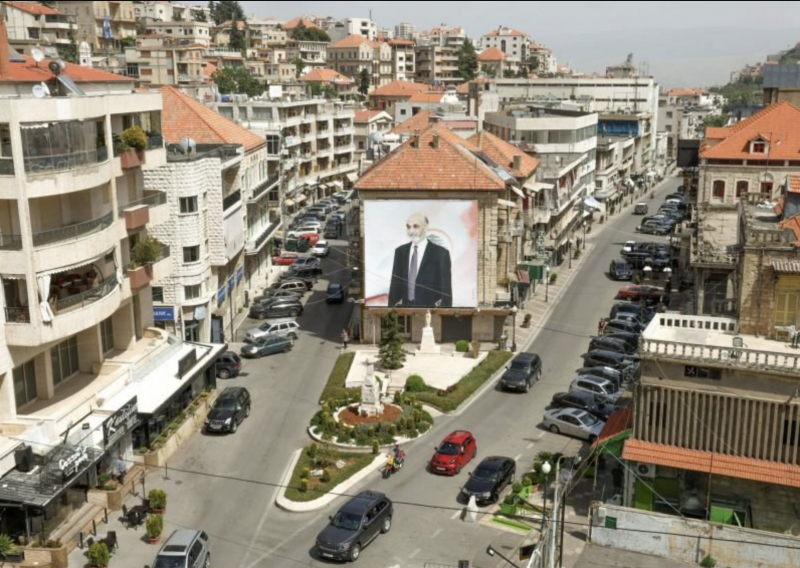
A billboard of LF leader Samir Geagea in the main square of Zahle. (Credit: Aziz Taher/Reuters)
Samir Geagea’s Lebanese Forces gained one seat compared to the 2018 polls in the Bekaa I constituency, consisting of the Zahle district (seven seats: two Greek Catholic, one Sunni, one Shiite, one Maronite, one Greek-Orthodox, one Armenian-Orthodox).
Three traditional lists exceeded the electoral threshold calculated at 13,241 votes, but none of four lists of the protest groups managed to make a breakthrough.
The results
• The LF list gained an additional seat compared to 2018, bringing three of their candidates to Parliament, namely, George Okais (Greek-Catholic), outgoing MP Elias Estefan (Greek-Orthodox) and Bilal al-Hashimi (Sunni).
• The alliance of the Free Patriotic Movement, Hezbollah and the Armenian party Tashnag also emerged stronger from this election, with three seats won in the list as well, including the Maronite seat that went to Salim Aoun, who will start a new mandate with the FPM, the Armenian-Orthodox seat went to Minister of Industry Georges Boujikian and the Shiite seat to Rami Abu Hamdan.
• Michel Daher, outgoing MP who was elected in 2018 on the list combining the FPM, the Future Movement of Saad Hariri and the Tashnag, flew solo this time. He joined a list of protest movement groups, of which he was the only candidate to be elected.
What to expect next
• We must wait for the detailed results of each list to know whether the protest groups could have obtained an electoral threshold through an alliance allowing them to compete with the traditional parties, or whether the useful vote prevailed to benefit the LF.
• The detailed results will also help to understand the mobilization of voters by sect, as the Christian voters seemed divided on the issue of Hezbollah’s weapons. While Hezbollah presented a separate list in 2018 with the Amal movement and Nicolas Fattouch, the Shiite vote may have largely shifted this time to the FPM list, limiting the losses of the party whose popularity has declined to one seat.
• Sunni participation will be an important factor that could explain how the LF advanced in an area where, in addition to the Christian seats, it was able to snatch the Sunni seat from the Future Movement. The latter shunned the election after the withdrawal of its leader from the political arena.
What to remember
• Having not joined forces on a single electoral list, the protest failed to make a breakthrough in Zahle, despite the candidacy of Eid Azar (Greek Orthodox), who became known among the Lebanese during the coronavirus pandemic.
• Unsurprisingly, the traditional forces have therefore confirmed a firm hand in the area, in an almost bilateral opposition between the two main Christian parties.
• Confirming its advance at the national level, Samir Geagea’s party was able to strengthen its position in an area where the Christian electorate exceeds 50 percent.
The issue of Hezbollah’s sovereignty and weapons was at the heart of the LF election campaign, Saudi Arabia’s main ally in Lebanon.
A few days before the election, Saudi ambassador Walid Bukhari visited Zahle to back the LF list, especially the candidacy of Bilal al-Hashimi — a support that appears to have yielded results.
This article was originally published in French on L'Orient-Le Jour.